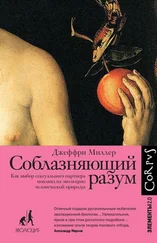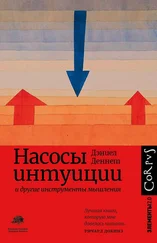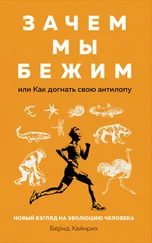Kauffman, Stuart. 2003. “The Adjacent Possible.” Edge.org, November 9, https://edge.org/conversation/stuart_a_kauffman-the-adjacent-possible.
Keller, Helen. 1908. The World I Live In. New York: Century.
Kessler, M. A., and B. T. Werner. 2003. “Self-Organization of Sorted Patterned Ground.” Science 299 (5605): 380–383.
Kobayashi, Yutaka, and Norio Yamamura. 2003. “Evolution of Signal Emission by Non-infested Plants Growing Near Infested Plants to Avoid Future Risk.” Journal of Theoretical Biology 223: 489–503.
Kosslyn, Stephen Michael. 1975. “Information Representation in Visual Images.” Cognitive Psychology 7 (3): 341–370.
–—. 1980. Image and Mind. Cambridge, Mass.: Harvard University Press.
Kosslyn, Stephen M., et al. 1979. “On the Demystification of Mental Imagery.” Behavioral and Brain Sciences 2 (4): 535–548.
Kosslyn, S. M., et al. 2001. “The Neural Foundations of Imagery.” Nature Reviews Neuroscience 2: 635–642.
Kurzweil, Ray. 2005. The Singularity Is Near: When Humans Transcend Biology. New York: Viking.
Laland, Kevin, J. Odling-Smee, and Marcus W. Feldman. 2000. “Group Selection: A Niche Construction Perspective.” Journal of Consciousness Studies 7 (1): 221–225.
Landauer, Thomas K., Peter W. Foltz, and Darrell Laham. 1998. “An Introduction to Latent Semantic Analysis.” Discourse Processes 25 (2–3): 259–84.
Lane, Nick. 2015. The Vital Question: Why Is Life the Way It Is? London: Profile.
Levin, M., 2014. “Molecular Bioelectricity: How Endogenous Voltage Potentials Control Cell Behavior and Instruct Pattern Regulation in Vivo.” Molecular Biology of the Cell 25: 3835–3850.
Levine, Joseph. 1983. “Materialism and Qualia: The Explanatory Gap.” Pacific Philosophical Quarterly 64: 354–361.
Levitin, Daniel J. 1994. “Absolute Memory for Musical Pitch: Evidence from the Production of Learned Melodies.” Perception & Psychophysics 56 (4): 414–423.
Levitin, Daniel J., and Perry R. Cook. 1996. “Memory for Musical Tempo: Additional Evidence That Auditory Memory Is Absolute.” Perception & Psychophysics 58 (6): 927–935.
Lewis, S. M., and C. K. Cratsley. 2008. “Flash Signal Evolution, Mate Choice and Predation in Fireflies.” Annual Review of Entomology 53: 293–321.
Lieberman, Matthew D. 2013. Social: Why Our Brains Are Wired to Connect. New York: Crown.
Littman, Michael L., Susan T. Dumais, and Thomas K. Landauer. 1998. “Automatic Cross-Language Information Retrieval Using Latent Semantic Indexing.” In Cross-Language Information Retrieval, 51–62. New York: Springer.
Lycan, William G. 1987. Consciousness. Cambridge, Mass.: MIT Press.
MacCready, P. 1999. “An Ambivalent Luddite at a Technological Feast.” Designfax, August.
MacKay, D. M. 1968. “Electroencephalogram Potentials Evoked by Accelerated Visual Motion.” Nature 217: 677–678.
Markkula, G. 2015. “Answering Questions about Consciousness by Modeling Perception as Covert Behavior.” Frontiers in Psychology 6: 803–815.
Marr, D. and T. Poggio. 1976. “From Understanding Computation to Understanding Neural Circuitry.” Artificial Intelligence Laboratory. A.I. Memo. Cambridge, Mass.: MIT.
Marx, Karl. (1861) 1942. Letter to Lasalle, London, January 16, 1861. Gesamtausgabe. International Publishers.
Mayer, Greg. 2009. “Steps toward the Origin of Life.” Jerry Coyne’s blog, https://whyevolutionistrue.wordpress.com/2009/05/15/steps-toward-the-origin-of-life/.
McClelland, Jay, and Joan Bybee. 2007. “Gradience of Gradience: A Reply to Jackendoff.” Linguistic Review 24: 437–455.
McCulloch, Warren S., and Walter Pitts. 1943. “A Logical Calculus of the Ideas Imminent in Nervous Activity.” Bulletin of Mathematical Biophysics 5: 115–133.
McFarland, David. 1989. Problems of Animal Behaviour. Harlow, Essex, UK: Longman Scientific and Technical.
–—. 1989b. “Goals, No-Goals and Own Goals.” In Goals, No-Goals and Own Goals: A Debate on Goal-Directed and Intentional Behaviour, edited by Alan Montefiore and Denis Noble, 39–57. London: Unwin Hyman.
McGeer, V. 2004. “Autistic Self-awareness.” Philosophy, Psychiatry & Psychology 11: 235–25l.
McGinn, Colin. 1991. The Problem of Consciousness: Essays towards a Resolution. Cambridge, Mass.: Blackwell.
–—. 1999. The Mysterious Flame: Conscious Minds in a Material World. New York: Basic Books.
McKay, Ryan T., and Daniel C. Dennett. 2009. “The Evolution of Misbelief.” Behavioral and Brain Sciences 32 (6): 493.
Mercier, Hugo, and Dan Sperber. 2011. “Why Do Humans Reason? Arguments for an Argumentative Theory.” Behavioral and Brain Sciences 34: 57–111.
Merikle, Philip M., Daniel Smilek, and John D. Eastwood. 2001, “Perception without Awareness: Perspectives from Cognitive Psychology.” Cognition 79 (1/2): 115–134.
Miller, Geoffrey F. 2000. The Mating Mind: How Sexual Choice Shaped the Evolution of Human Nature. New York: Doubleday.
Miller, George A., Eugene Galanter, and Karl H. Pribram. 1960. Plans and the Structure of Behavior. New York: Henry Holt.
Miller, Melissa B., and Bonnie L. Bassler. 2001. “Quorum Sensing in Bacteria.” Annual Reviews in Microbiology 55 (1): 165–199.
Millikan, Ruth Garrett. 1984. Language, Thought, and Other Biological Categories:
New Foundations for Realism. Cambridge, Mass.: MIT Press.
–—. 1993. White Queen Psychology and Other Essays for Alice. Cambridge, Mass.: MIT Press.
–—. 2000. On Clear and Confused Ideas: An Essay about Substance Concepts. Cambridge: Cambridge University Press.
–—. 2000b. “Naturalizing Intentionality.” In Philosophy of Mind, Proceedings of the Twentieth World Congress of Philosophy, edited by Bernard Elevitch, vol. 9, 83–90. Philosophy Documentation Center.
–—. 2004. Varieties of Meaning. The 2002 Jean Nicod Lectures. Cambridge, Mass.: MIT Press.
–—. 2005. Language: A Biological Model. Oxford: Clarendon Press.
–—. Forthcoming. Unicepts, Language, and Natural Information.
Minsky, Marvin. 1985. The Society of Mind. New York: Simon and Schuster.
Misasi J., and N. J. Sullivan. 2014. “Camouflage and Misdirection: The Full-on Assault of Ebola Virus Disease.” Cell 159 (3): 477–486.
Moravec, Hans P. 1988. Mind Children: The Future of Robot and Human Intelligence. Cambridge, Mass.: Harvard University Press.
Mordvintsev, A., C. Olah, and M. Tyka. 2015. “Inceptionism: Going Deeper into Neural Networks.” Google Research Blog. Retrieved June 20.
Morgan, Elaine. 1982. The Aquatic Ape. New York: Stein and Day.
–—. 1997. The Aquatic Ape Hypothesis. London: Souvenir Press.
Morin, Olivier. 2016. How Traditions Live and Die: Foundations for Human Action. New York: Oxford University Press.
Nagel, Thomas. 1974. “What Is It Like to Be a Bat?” Philosophical Review 83 (4): 435–450.
Newell, Allen. 1992. “The Knowledge Level.” Artificial Intelligence 18 (1): 87–127.
Nimchinsky, E.A., E. Gilissen, J. M. Allman., D. P. Perl, J. M. Erwin, and P.R. Hof. 1999. “A Neuronalmorphologic Type Unique to Humans and Great Apes.” Proc Natl Acad Sci. 96 (9): 5268–5273.
Nörretranders, Tor. 1998. The User Illusion: Cutting Consciousness Down to Size. New York: Viking. Peirce, Charles S. 1906. Collected Papers of Charles Sanders Peirce, edited by Charles Hartshorne and Paul Weiss. Cambridge, Mass.: Harvard University Press. Penrose, Roger. 1989. The Emperor’s New Mind: Concerning Computers, Minds, and the Laws of Physics. Oxford: Oxford University Press. Pinker, Steven. 1997. How the Mind Works. New York: W. W. Norton.
–—. 2003. “Language as an Adaptation to the Cognitive Niche.” Studies in the Evolution of Language 3: 16–37.
Читать дальше
Конец ознакомительного отрывка
Купить книгу
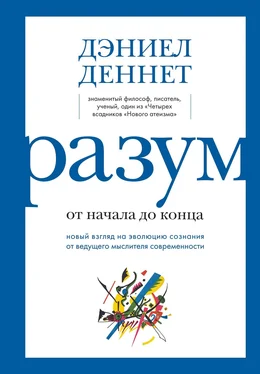




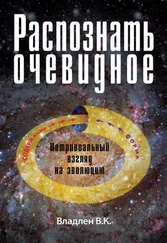
![Берндт Хайнрих - Зачем мы бежим, или Как догнать свою антилопу [Новый взгляд на эволюцию человека] [litres]](/books/386118/berndt-hajnrih-zachem-my-bezhim-ili-kak-dognat-svo-thumb.webp)
![Джеффри Миллер - Соблазняющий разум [Как выбор сексуального партнера повлиял на эволюцию человеческой природы] [litres]](/books/401316/dzheffri-miller-soblaznyayuchij-razum-kak-vybor-seksu-thumb.webp)
